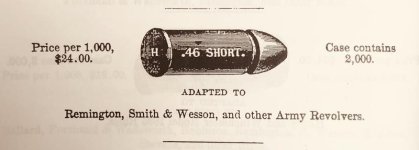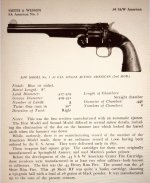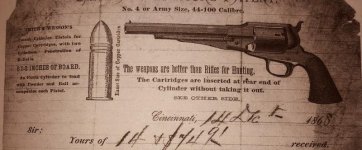I keep finding period listings for the .46 short rimfire associated with the Smith & Wesson American revolver. Does anyone know if this is true? Was there a .46 short rimfire American revolver made?
I’m only aware of the Remington and that was an early conversion that involved the using of Rollin White’s bored through patent.
However, the 1875 Winchester catalog clearly states “Smith & Wesson” army revolver included in the .46 short rimfire listing.
Perhaps it was submitted to the U.S. Army trials but never manufactured?
This would be the largest caliber revolver Smith and Wesson manufactured since the bullet is listed as .456 in diameter. That’s bigger than the Schofield at .449.
Murph
I’m only aware of the Remington and that was an early conversion that involved the using of Rollin White’s bored through patent.
However, the 1875 Winchester catalog clearly states “Smith & Wesson” army revolver included in the .46 short rimfire listing.
Perhaps it was submitted to the U.S. Army trials but never manufactured?
This would be the largest caliber revolver Smith and Wesson manufactured since the bullet is listed as .456 in diameter. That’s bigger than the Schofield at .449.
Murph
Attachments
Last edited:




